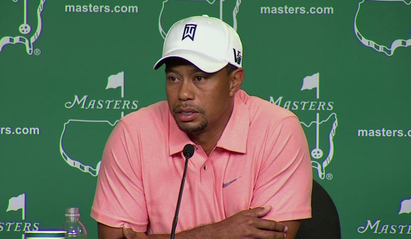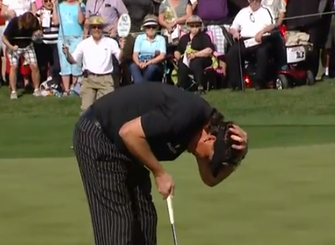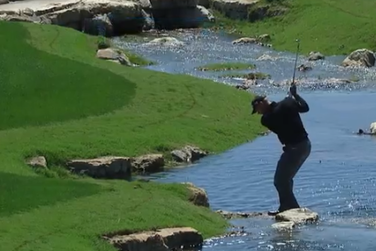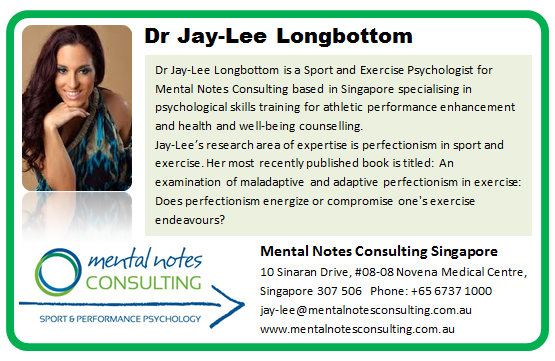 Perfectionism has been placed under the researcher’s microscope in recent years to determine whether this complex personality trait has a positive or negative influence on performance and well-being. Some of the most controversial examples of perfectionistic individuals can be found in the world of elite sport. When Tiger Woods won his first Major at Augusta he was the longest off the tee by more than 30 yards. He was hitting wedges & 9 irons into the par 5's and that is when talk of Tiger proofing Augusta started. He won by a record 12 strokes and immediately began the task of transforming his swing. Move to the centre court at Wimbledon and you will see the cameras fixed on Rafael Nadal’s eccentric on-court routine. In front of the chair Nadal is sitting on during breaks you will always see two water bottles (one chilled, one not). Every time play changes ends the bottles are lined up so the labels face the baseline of the side he is playing. As they are repositioned he takes a sip from both without fail.  Critics and fans alike have questioned whether these obsessive behaviors are the result of perfectionism gone awry or the secret to success. Is perfectionism, good, bad, or both? This is the question posed by many Sport Psychologists including myself. Recent research emphasizes perfectionism as a double-edged sword. On the bright side, perfectionism has been labelled a hallmark of Olympic champions, characterized by extremely high personal standards and an insatiable appetite for success. On the flip side, when that drive to succeed becomes an obsessive need to avoid failure, the darker side of perfectionism can rear its ugly head. Research has shown that an adaptive form of perfectionism is indicated by high personal standards for performance, neatness and precision, and persistent hard work and effort in one’s achievement striving. In this form, a perfectionistic individual exemplifies very similar traits to the “high achiever.” It appears that perfectionism becomes problematic when these seemingly motivational traits coexist with a tendency to be over-self-critical and extremely rigid in one’s performance pursuits such that anything less than perfect is viewed as failure. The combination of these traits forms maladaptive perfectionism. Unlike those exhibiting maladaptive perfectionistic traits, positive perfectionists aim high but seem to be more accepting of their limitations and limitations in their environment. So what does perfectionism look like in the real world? We live in a society that praises perfectionistic striving and demands high standards and precision, in order to stand out from the rest. Take a closer look at your own experiences and there’s no doubt you have found yourself tied up in the perfectionism paradox at one point or another.  For some of us, a healthy dose of perfectionism has fuelled our pain-staking efforts to put out a superior product on the job, or stay behind in training countless hours to refine a change in your technique or master a new skill. Take a look at your habits outside of golf and inside the academic zone. I am certain that as an elite player and student with the desire to reach the top, you have found yourself doing anything you could in order to avoid writing that important mid-term paper. Not because you hate writing, but because you must produce a perfect piece, and you perceive failure before you begin typing. Instead of starting the project you organize your inbox, clean your apartment, or perhaps even dust off your running shoes. Many of us don’t realize that procrastination is a key indication of maladaptive perfectionism. When our intentions to deliver an excellent product is confused with a mistake-free product, we are left with doubts about our adequacy to get the job done, resulting in high levels of stress and ultimately, total avoidance of the task. Sound familiar? So then, how does one maintain the perfectionist’s edge without crossing over to the dark side? What is the secret to finding a balance? For insight into preserving the bright side of your perfectionist nature, look no further than the media releases of the world’s best athletes. In the ramp up to the London Olympics 2012, BBC news revealed the startling demise of swimming sensation Michael Phelps during his London Olympic campaign. After winning eight gold medals, in a week-long display of invincibility at the 2008 Games, expectations for the then 23 year old “Baltimore Bullet”, rose to nothing short of sheer perfection. Without the freedom to make mistakes, Phelps instinctual move was to avoid the pool at all costs, which he did successfully for almost 2 years from 2009-2010. Reporters declared Phelps’ come back to Olympic form a by-product of his revived competitive drive. However, when you peel back the layers of Phelps’ perfectionistic nature the truth behind his recovery is in plain sight. The 27-year-old explained, “Everything I've done, I've been able to learn from - mistakes I've made in the pool, mistakes I've made out of the pool”. Showing signs of freedom to be less precise and less self-punitive, Phelps tweeted a month before the Olympics, “My life, my choices, my mistakes, my lessons, not your business.” “Physically it’s been painful, but we’re taking steps in the right direction.” Adaptive perfectionists are people who derive a real sense of pleasure from the labours of a painstaking effort and who feel free to be less precise. Through the ebbs and flows in the careers of some of the world’s best athletes, we can learn the art of harnessing an adaptive style of perfectionism. The following section provides tips for preventing the dark side of perfectionism and promoting a healthy competitive mind-set for competition and adaptive habits on the range and practice green. TIPS FOR PREVENTING THE DARK SIDE OF PERFECTIONISM AND PROMOTING HEALTHY ACHIEVEMENT STRIVING IN YOUR TOUR READY ENDEAVOURS.  DEALING WITH FEAR OF FAILURE Individuals with negative perfectionistic tendencies are driven by a fear of failure. Confront your fear of failure and breakdown your irrational thinking: Ask yourself: “What is the worst thing that could happen if I didn’t do everything just perfectly?” Sit down with your coach and discuss “worse case scenarios” and positive responses for the upcoming competition, looking at undesirable situations in the preparation phase, the warm-up before the round, and on-the course. Planning positive responses to “worse case scenarios” can help you more readily accept the limitations in yourself and your environment and recognise that there is no such thing as perfect preparation, or a perfect round of golf for that matter. It helps you to feel more in control and ready to adapt your actions and expectations in any situation. Fear of Failure = Procrastination and Avoidance Behaviour: Fear of failure often leads to procrastination in training and avoidance of effort in competition to protect against experiencing intense disappointment from not achieving an error free, perfect performance. This is the behaviour associated with the “ALL OR NOTHING” MINDSET OF A PERFECTIONIST. To prevent this type of behaviour in your own training:
Reinterpret the Meaning of Errors and Mistakes
Learn to Let Go Players with highly negative perfectionistic tendencies often engage in obsessive thoughts about their recent performance and ruminate over mistakes. Put in place rituals that help you step away and focus on other things in their daily life.
Misplaced Effort is Typical Be careful not to over-generalise the importance of competition events. Misplaced effort can lead to greater disappointment. Learn to distinguish between life essentials and non-essentials, priority events and events simply for experience/learning. Your annual plan should clearly specify priority events, events for preparatory purposes, and new events for experience and learning (even at the elite level). This will promote an adaptive mind-set and allow you to better manage your expectations and energy. Create Objective Goals for Training Maladaptive perfectionists focus on avoiding errors and performing every shot/ skill/ set perfectly, therefore these golfers:
1. Keep a structured training diaries that specifies:
2. Make sure you begin training with an objective goals around training drills that demonstrate room for error or create a focus on the process:
> 7/10 pitch shots inside a 1 metre radius. > 10 pitch shots from 3 different locations: > Achieve a total of at least 21/30 inside a 1 metre radius.
> Success should be based on feel and NOT on the outcome of the shot. Aim high but set your expectations at the level you have been performing at in practice. Maintain realistic goals based on real facts about your performance standards. High personal standards in achievement striving that coexists with these important thoughts and actions around performance, has the potential to be a “perfectly positive disposition.” Comments are closed.
|
Archives
June 2019
|
Proudly Supported By
Copyright © 2011 - 2018 Pro Tour Golf College
Website Managed By Golf Performance Media
All Rights Reserved
Website Managed By Golf Performance Media
All Rights Reserved


 RSS Feed
RSS Feed



